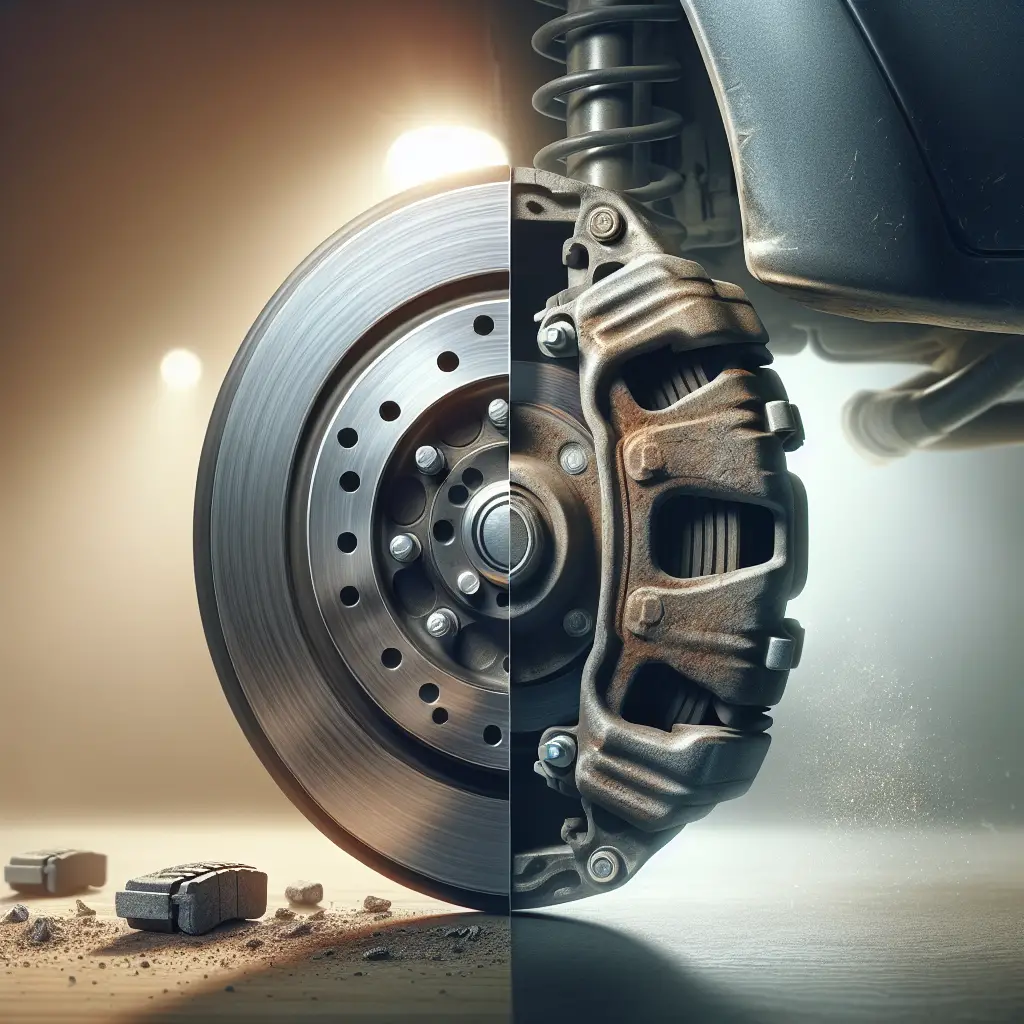Why Do Rear Brakes Wear Out Before Front Brakes? Deciphering the Uncommon Scenario
Brake system maintenance is an essential component of vehicle safety that can’t be overstressed. Typically, it’s the front brakes that request more frequent replacements due to their significant role in bringing your ride to a halt. However, some drivers may notice their rear brakes bidding farewell prematurely – a phenomenon that is both intriguing and unsettling. Let’s brake down the factors contributing to this counterintuitive occurrence, ensuring that our journey through automotive insights stays as smooth as your trusted vehicle’s stopping performance.
Understanding Weight Distribution and Brake Dynamics
Before we hit the gas on the specifics, it’s crucial to comprehend how a car’s braking system functions in tandem with weight distribution. During braking, the vehicle’s momentum shifts forward, placing more stress on the front brakes (Car and Driver). This is because the front brakes are responsible for a lion’s share of the braking force, a concept solidly supported by the laws of physics.
Now, When Do Rear Brakes Wear Out Faster? – Navigating Through the Anomalies
- The Design of Brake Bias and System Components: Modern cars typically have a brake bias designed to engage the front brakes more aggressively. But some vehicles, especially older models, might have a different setup where rear brakes may experience more stress. It’s also worth noting that vehicles with drum brakes on the rear – generally less effective and more prone to wear – can also be subjected to faster deterioration (Edmunds).
-
Caliper Issues and Brake Pad Dilemmas: Calipers apply the pressure needed to bring the car to a halt. If they are sticky or seized quite frequently on the rear, there’s an elevated risk of the rear brakes wearing out faster. Brake pad quality is also a determining factor; if the rear brake pads are of inferior quality compared to the front, they might throw in the towel sooner.
-
Parking Brake Puzzles: Regular use of the parking brake, which mostly applies to the rear brakes, can lead to increased wear if not adjusted correctly. And if you’re someone who often forgets to disengage the parking brake before driving off, this may as well be an open invitation for the rear brakes to endure heightened strain.
-
Driving Habits and Environmental Factors: Your driving style has a direct impact on your brakes. Aggressive braking or driving in hilly areas where your vehicle relies more on the rear brakes can speed up their decline. Moreover, driving conditions like mud, dirt, or road salt can cause abrasive wear on rear brake components, leading to premature replacement time calls (Consumer Reports).
Spotting the Signs of Rear Brake Wear
Vigilance is key in identifying rear brake wear. Here are some symptoms to look out for:
- Unusual noises during braking, such as grinding or squeaking.
- The vehicle pulling to one side when applying the brakes.
- A spongy or soft brake pedal feel.
- The dashboard brake warning light illuminates, indicating potential brake system issues.
Maintenance Is Your Brake System’s Best Friend
To keep your brakes in prime condition, adhere to the following best practices:
- Regularly check your brake pads’ thickness.
- Ensure your brake fluid is at the correct level and condition.
- Have your entire brake system checked by a professional during routine maintenance.
- Follow the manufacturer’s recommended service intervals.
Now that we’ve navigated through the potential causes of premature rear brake wear, it’s clear that several factors can influence this atypical wear pattern. From design characteristics and mechanical failures to driving habits and maintenance schedules, understanding the source of the issue can help you address it effectively.
The Takeaway – Extend the Longevity of Your Rear Brakes
Though front brakes usually bear the brunt of brake wear, circumstances where the rear brakes wear out first shouldn’t be overlooked. Factor in the design, use, and upkeep of your vehicle’s brake system to mitigate early wear and tear. Remember, regular maintenance is the backbone of a durable and reliable brake system, and as they say, a stitch in time saves nine.
Keep an eye out for wear indicators, consult with your trusted mechanic for any concerns, and never cut corners when it comes to brake component quality (YourMechanic). After all, ensuring optimum performance of your vehicle’s brakes is not just about maintenance; it’s about safety.
In conclusion, don’t let brake wear outpace your vehicle’s safety. Understanding the ‘whys’ behind rear brakes wearing out before the front ones can help you prevent this anomalous pattern and maintain your car’s peak stopping prowess. Stay ahead of wear and tear, and keep those brake pads in check – it is, without doubt, one of the wisest investments you can make for a safe and smooth driving experience.

